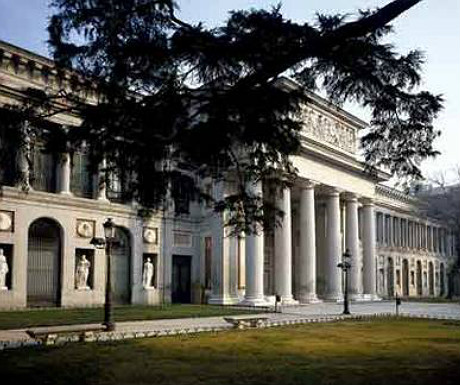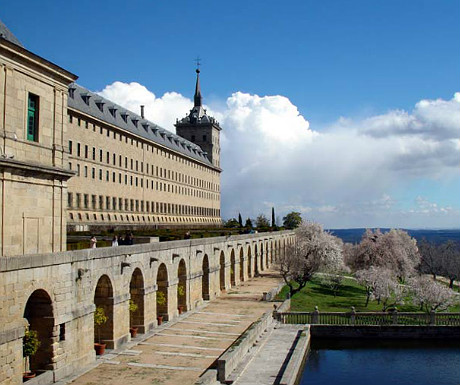
The Madrilenos operate at a different pace of life to most of us. It is relaxed, leisurely and calm. Reset your watches and your time-clocks and keep those afternoons slow… it’s not until night-time when Madrid bursts into life. Madrid is a city of over three million, situated on the Manzanares River in the centre of Spain. It offers much to tourists who will be drawn to the areas of Old Madrid and Bourbon Madrid, an area that stretches from the Palacio Real to Parque del Retiro.
It is a contrast of magnificence versus idyllic relaxation and freedom. Almost everything you could want can be found here, from flamenco to tapas, architecture to art, bullfighting to chocolate con churros, and a history that may prove as unexpected as it is beautiful. A walk along the Gran Via, the capital’s famous, central street, takes you through much of this history. A diversion down any side street will lead to more wonders.
La Puerta del Sol is the city’s most famous square, with a clock tower that draws thousands of the city’s residents on New Year’s Eve. The nearby Plaza Mayor might hum like a tourist trap, but its architecture and vibrancy are mesmerizing. The square was inaugurated in 1620 by Felipe III, and it is a statue of him on horseback that dominates the center of the square.
Tourist books list endless “must-visit” destinations, but here are five that embrace very different aspects of Madrid’s magnificence and charm.
The Prado
The Prado is home to one of the world’s great museums, which opened as far back as 1819. An art lover could visit for a week and never step outside, getting lost in a maze of rooms with many of the world’s greatest works of art. The European masters (Velázquez and Goya, chiefly, alongside Raphael, Rubens and Bosch) dominate but this is a museum that spans the ages from the 12th to the 19th centuries. There is so much to see that it requires careful planning if you wish to appreciate the different artists and eras. Whistle-stop options are available, of course, with highlights including “Las Meninas” by Velazquez, and the frightening “The Garden of Delights” by Bosch, a large triptych that pulls you into the beauty and horror of creation and damnation.

Given the queues that wind out onto the tree-shaded El Paseo del Prado, buying tickets in advance is recommended. Even better, buy the “Art Walk” ticket which grants entry to two of the city’s other big museums: Thyssen Bornemisza and Reina Sofia. The latter is home to Picasso’s disturbing Guernica, a 25-foot wide oil that depicts the village of Guernica being bombed during the Spanish Civil War. The three museums are all within a short distance of each other, in one of Madrid’s most vibrant districts.
A walk at night
A walk around the heart of Old and Bourbon Madrid is a revelation when darkness falls. The night is lit up and positively buzzing with energy. Fountains shimmer as water spills over marble sculptures, buildings bask in the glow of light on stone and statues loom out of the shadows on street promenades and from perches on buildings overhead. Start at the Plaza de la Independencia on the north-west corner of Parque del Retiro and stroll west across plazas, and along streets that vibrate with activity. This is when the locals come out to eat, drink and play so there’s no better time to get a taste of the city. Enjoy the busy bars and restaurants or find a bench in La Puerta del Sol and watch the Spaniards at their hippest and best.
Wherever you go, people are walking and the current sweeps you on towards the Palacio Real, which blushes violet under the night lights. The Plaza de Oriente sprawls before the palace and proves a magnet for musicians. Leaning against railings or sitting on walls they play to crowds who stand and listen or lounge under nearby trees. Stay and listen, then head back along different streets and enjoy the night time adventure that makes Madrid so special.
El Escorial
Madrid offers day trips in almost any direction you choose, but to the north west of the city lies El Escorial, one of Spain’s jewels and one of the country’s biggest tourist attractions. It is worth taking the 60 minute bus journey (the 664 and 661 leave regularly from Moncloa bus station on the western edge of Old Madrid) as buses weave through Madrid’s suburbs and through the countryside. The bus also drops you at the heart of the town, bringing you a lot closer to El Escorial than the train.

El Escorial is a 16th Century royal monastery in the town of San Lorenzo de El Escorial, at the foot of the Sierra de Guadarrama. It was built for Philip II, King of Spain, and demonstrates how monarchy and religion combined so seamlessly in earlier centuries. Bright stone, cobbled squares, endless courtyards and a basilica of remarkable proportions – its dome rises a hundred meters – all promise an intriguing look into the past. Today, it is a monastery, palace, school and museum and visitors can explore on their own or through guided tours. In the library, aged globes show a very different world to the one we are familiar with, while the ceiling and walls are adorned with frescoes in brilliant colors. Each room can stop you in your tracks, but it is the Royal Pantheon chamber beneath the basilica that may be the most remarkable of all. Here lie the remains of Spanish kings for the past five centuries, preserved in sepulchers and arranged neatly on top of one another for visitors to behold. It is fascinating if somewhat morbid sight.
This remains the most important architectural monument of the Spanish Renaissance and the building still houses many of the masterpieces selected by Velasquez for Philip IV, including Titian’s Last Supper. Visit early in the morning or mid-afternoon (when Spain slips into siesta mode) for the quietest times as El Escorial is worth taking time over.
Parque del Retiro
Once a retreat for the Royal family, the park is now open to anyone who wants to walk through this idyllic, tree-laced utopia. Surrounded by busy roads, you quickly get lost in the peacefulness of its 320 acres. It is endlessly popular with the locals who flock to it in the evenings for its shaded pathways, fountains, boating lake and the remarkable Crystal Palace. Time almost slows down here, although the outer paths are popular with joggers, so beware.
Further in you can spread out on the grass, admire the many sculptures (including the large monument surrounding a statue of King Alfonso XII, which overlooks the lake), hire a boat or simply stroll between the trees and gardens. The park has been here for over three centuries but it is not simply about adding a beautiful green space to the city. Its purpose runs deeper as the endless stretches of trees offer a cooling effect for those who want to escape the heat of the day – which explains why Retiro translates as “retreat”.
The park is not far from the Prado and the Botanic Gardens on the eastern border of Bourbon Madrid.
Rastro flea market day
A Sunday stroll or a scrum of multitudes thronging the streets in the center of Madrid – however, you want to look at it, this is a flea market unlike anything you’ve seen. Street after street is lined with stalls – possibly over 3,000 – selling everything from leather clothes to jewelry to furniture to antiques. Packed with locals and tourists alike, it is a vibrant atmosphere where you can buy, haggle or just gawk at the colorful spectacle. It is such a maze you might find it hard to escape but, should that happen, relax and drop into one of the many bars and restaurants that feed Plaza de Cascorro, Calle Ribera de Curtidores and the surrounding streets.
Every tourist guide will tell you to beware of pickpockets who are rife at the market.
Music and food
Almost every street, nook and cranny leads to a bar, restaurant or club. From the joys of fast tapas to Michelin-starred luxury, the Madrilenos know how to enjoy themselves. After the quiet pace of lunchtime, Madrid comes alive at night, often much later than visitors might be used to. It is always worth staying up to experience the real beat of city life – and it gives you another excuse to revel in that afternoon siesta. Remember, if you wish to eat in one of Madrid’s top restaurants or visit the flamenco clubs, advance booking is essential.
Where to stay
Try the 4 star Petit Palace Savoy Alfonso XII, a palace from the 19th Century that overlooks Parque del Retiro. There is something charming about opening curtains and seeing acres of trees and space in front of you. A stroll after breakfast will get your day off to the perfect start.
Transport
The underground Metro system is fast and efficient, but the tourist buses show off so much more of the city. It may fall into that typical lazy tourist category, but traveling on one of the open-air double decker buses is refreshing as well as educational. There are two routes, running well into the night, and the eastern route takes you out to the Palacio Real.
The commuter bus service is recommended for transport to and from the airport. It is fast and a lot cheaper than a taxi.
By Paul Johnson
